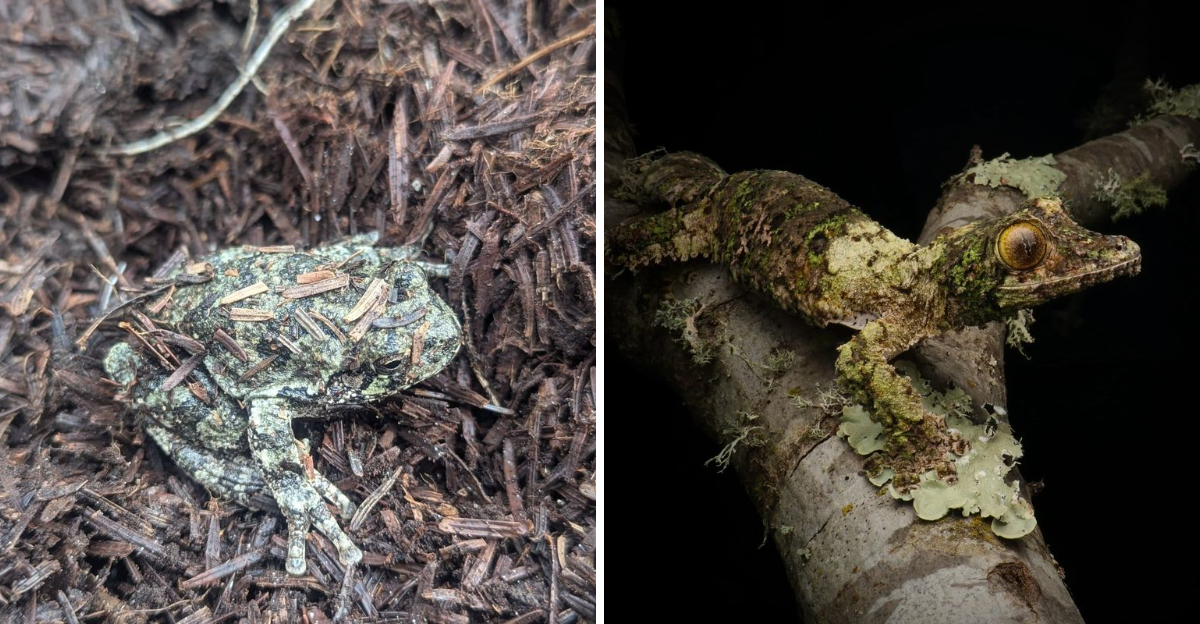Camouflage is a fascinating adaptation that allows animals to blend into their surroundings. This ability helps them avoid predators, sneak up on prey, or gain other survival advantages.
Here are 13 incredible animals that have mastered the art of camouflage, each with its unique approach and environment.
1. Leaf-Litter Toad
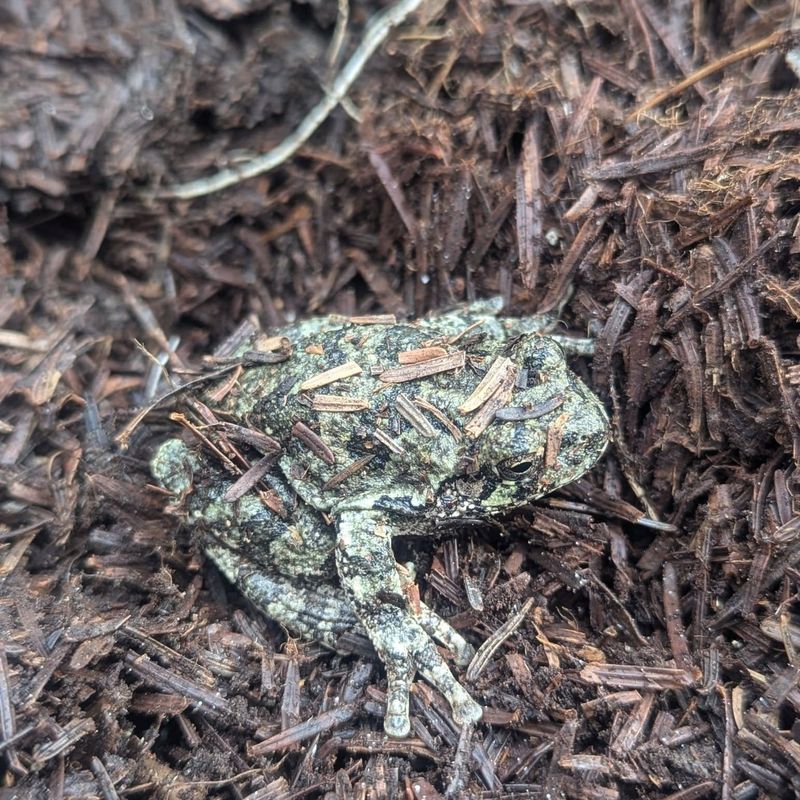
The leaf-litter toad is an expert at blending into the forest floor, where it resides among the decaying leaves. This toad’s skin closely resembles the color and texture of dried leaves, providing excellent camouflage from predators.
Its mottled brown and tan patterns mimic the dappled sunlight filtering through the canopy, further enhancing its ability to stay concealed. This adaptation not only protects it from being eaten but also helps it ambush unsuspecting insects.
Leaf-litter toads play a vital role in their ecosystem by controlling insect populations. Observing their camouflage in action offers insights into the intricate balance of nature, where every species has a significant role. These toads demonstrate the remarkable ways in which animals adapt to their environments to survive and thrive.
2. Giant Leaf-Tailed Gecko
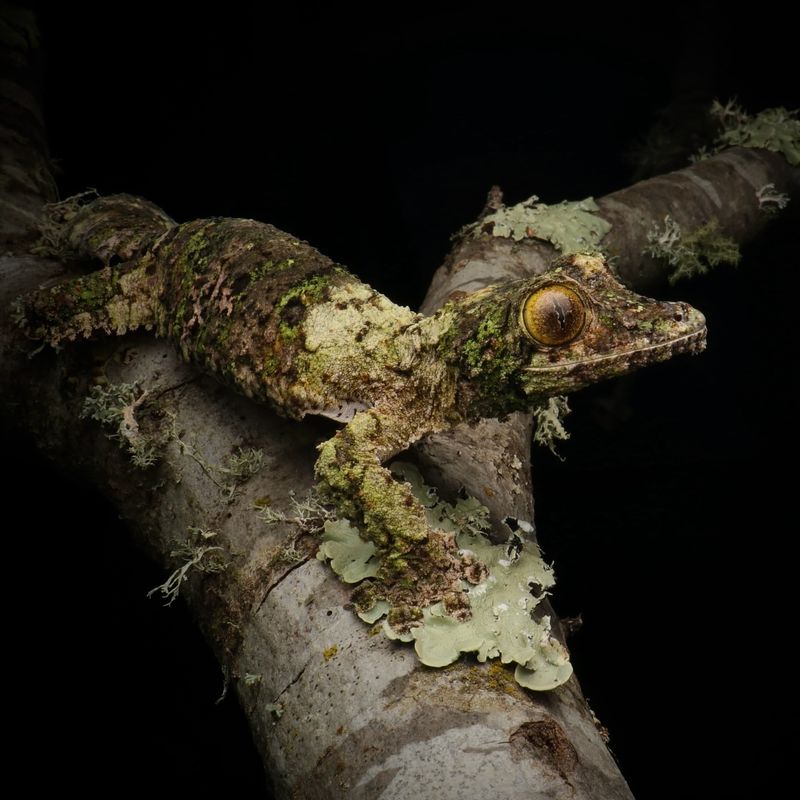
The giant leaf-tailed gecko is a master of disguise, dwelling in the dense forests of Madagascar. Its skin exhibits patterns and textures that mimic tree bark and leaves, allowing it to virtually disappear among the foliage. This clever adaptation protects it from predators and aids in ambushing prey.
During the day, it remains motionless, blending seamlessly with its surroundings. When night falls, this gecko becomes active, using its camouflage to sneak up on insects. Its tail, resembling a dry leaf, adds to its disguise, making it even more difficult to spot.
Conservationists study these geckos to understand their unique adaptations, which may inspire innovations in camouflage technology. Their ability to blend into their environment so thoroughly showcases the incredible diversity of life and the intricate relationships within ecosystems.
3. Pygmy Seahorse
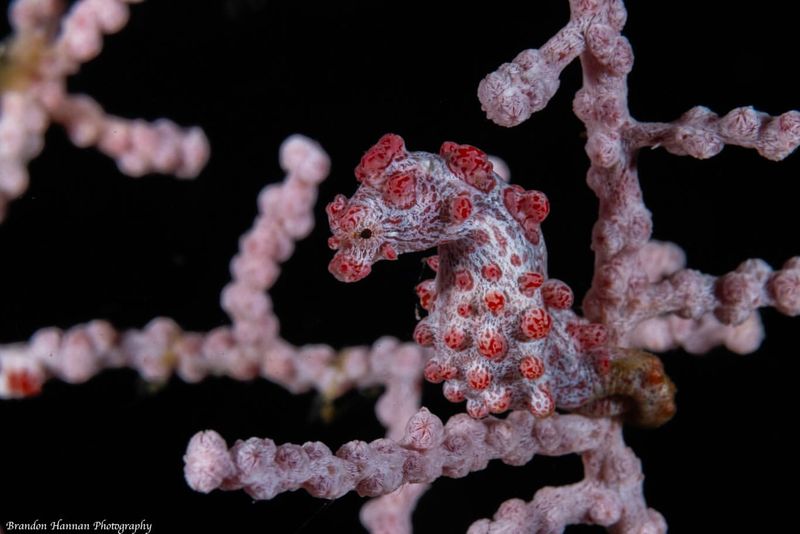
The pygmy seahorse is a tiny marine creature that has evolved to blend perfectly with the coral reefs it inhabits. Its body is covered in knobby projections that mimic the texture and color of the surrounding coral, providing excellent camouflage.
These seahorses are often so well camouflaged that they are difficult to spot even for experienced divers. This adaptation allows them to avoid predators while also making it easier to sneak up on tiny prey like plankton.
The pygmy seahorse’s ability to match its environment so precisely is a testament to the intricate connections between species and their habitats. Their survival strategies highlight the delicate balance of marine ecosystems and the importance of preserving coral reefs.
4. Wrap-Around Spider
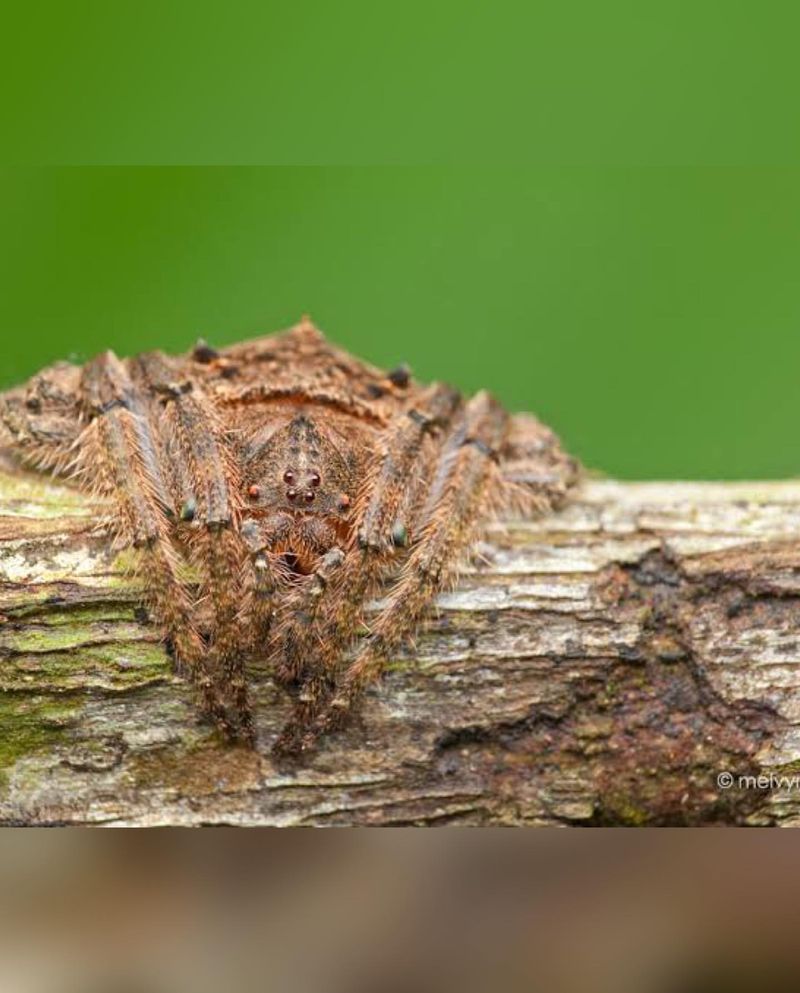
The wrap-around spider is a marvel of nature, known for its ability to flatten its body around tree branches, making it nearly invisible. Its body mimics the color and texture of bark, allowing it to hide in plain sight from both predators and prey.
This spider’s unique adaptation involves not just coloration, but also posture. By hugging the contours of branches, it becomes one with its environment, a technique that provides both protection and a strategic position for hunting.
Studying the wrap-around spider offers insights into evolutionary adaptation and the complex strategies animals use to survive. It exemplifies the extraordinary creativity of nature, where even the smallest creatures can possess remarkable skills that ensure their continuation.
5. Arctic Hare
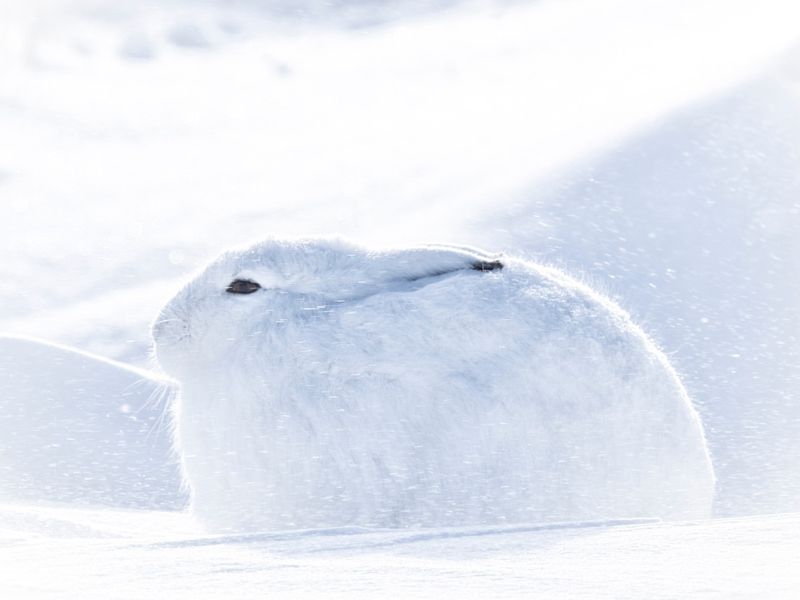
The arctic hare is a prime example of seasonal camouflage, changing its fur color to match the environment. During winter, its coat turns white, blending seamlessly with the snow-covered Arctic tundra.
This adaptation helps the hare avoid predators such as foxes and eagles. In summer, its fur changes to a brownish-grey, matching the rocky terrain and sparse vegetation.
The arctic hare’s ability to adapt to the changing seasons is a remarkable demonstration of evolution in action. It highlights the importance of camouflage for survival in extreme environments, where every advantage can mean the difference between life and death.
6. Decorator Crab
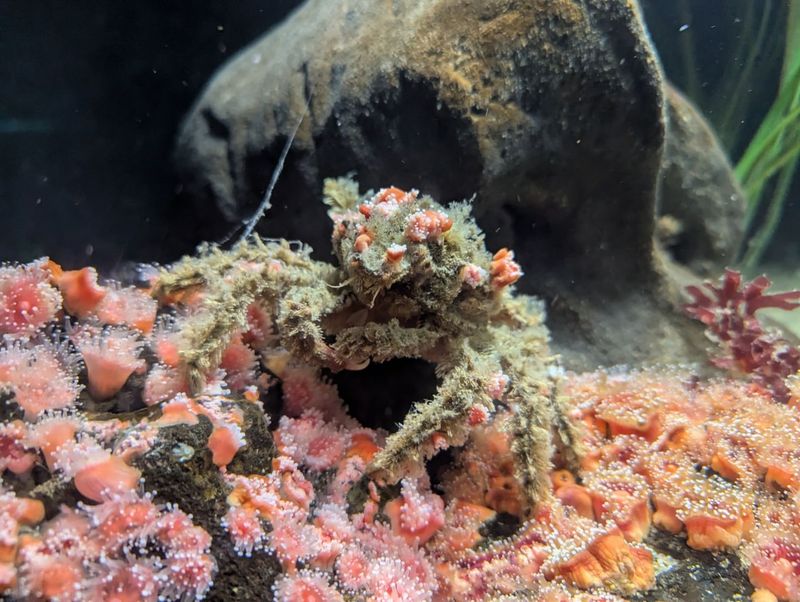
The decorator crab is a unique crustacean known for its ability to adorn itself with materials from its environment, such as seaweed, shells, and small stones. This behavior not only provides camouflage but also deters predators.
Using its pincers, the crab carefully selects and attaches these materials to its shell, creating a disguise that helps it blend with the ocean floor. This active form of camouflage is not only practical but also showcases the crab’s resourcefulness.
Decorator crabs are fascinating examples of how animals use available resources to enhance their survival. Their behavior offers insights into the creative strategies employed by marine life to adapt to their surroundings, revealing the dynamic and ever-changing nature of ocean ecosystems.
7. Owl
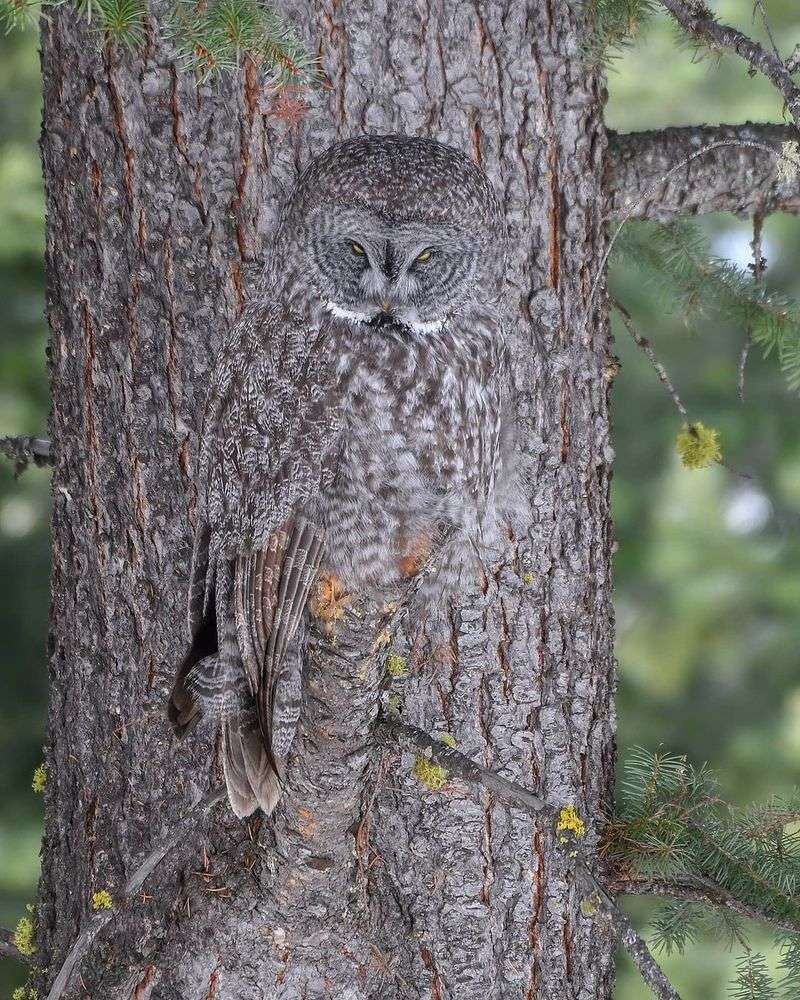
Owls are masters of disguise, utilizing their feather patterns to blend into tree branches and forest surroundings. Their mottled plumage mimics the colors and textures of bark and leaves, making them nearly invisible during the day.
This camouflage is crucial for hunting, allowing owls to surprise prey with silent flight. It also protects them from potential threats when resting.
The owl’s ability to merge with its environment underscores the significance of camouflage in the animal kingdom. It also illustrates the adaptive strategies that enable predators to thrive in various habitats, maintaining the balance within ecosystems.
8. Sidewinder Rattlesnake
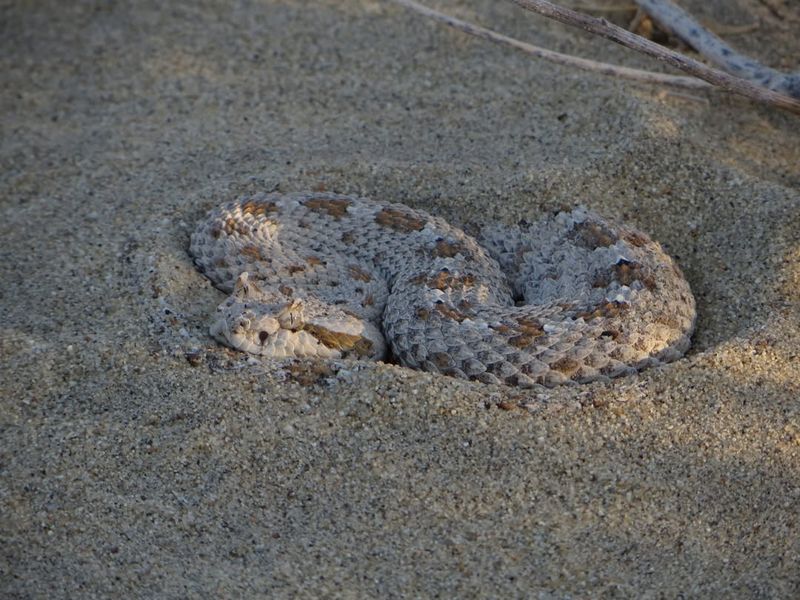
The sidewinder rattlesnake is an iconic desert dweller, known for its unique sideways movement and exceptional camouflage. Its sandy coloration helps it blend with the desert landscape, providing cover from both predators and prey.
This snake’s camouflage is complemented by its distinctive movement, which leaves minimal tracks in the sand. This adaptation is crucial for thermoregulation and stealth, essential for survival in the harsh desert climate.
By studying the sidewinder rattlesnake, scientists gain insights into the adaptations necessary for life in extreme conditions. Its camouflage and movement techniques are prime examples of how animals evolve to thrive in specific environments, showcasing the diversity and adaptability of life on Earth.
9. Chameleon
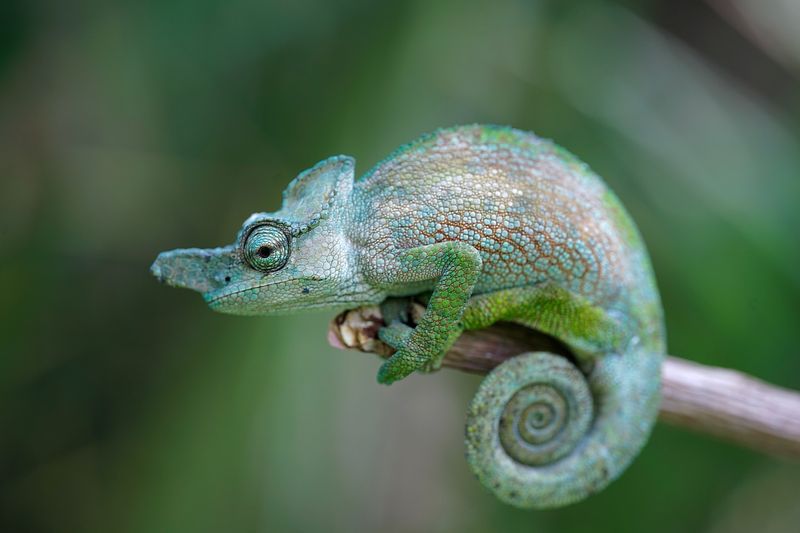
Chameleons are famous for their ability to change color, a skill that serves both for camouflage and communication. Found in various habitats, from rainforests to deserts, their color-changing ability allows them to blend with diverse surroundings.
This adaptability helps chameleons avoid predators and regulate their body temperature. It also plays a role in social signaling, such as displaying dominance or attracting mates.
Chameleons’ color-changing ability is a marvel of biology, involving complex cellular structures that reflect light differently. Their camouflage techniques continue to inspire research into new technologies, emphasizing the profound ways in which animals have adapted to their environments.
10. Stonefish
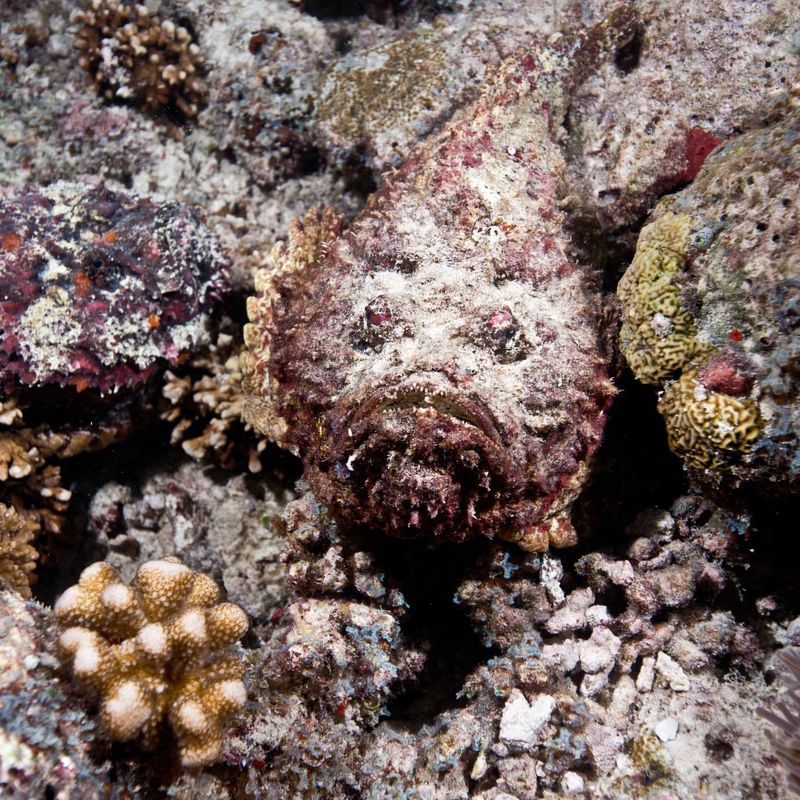
The stonefish is a master of disguise in the marine world, known for its ability to blend seamlessly with the ocean floor. Its mottled skin resembles rocks and coral, offering protection and a strategic advantage for ambushing prey.
This camouflage is so effective that the stonefish is often mistaken for an inanimate object, even by experienced divers. Its ability to remain undetected allows it to capture unsuspecting fish with lightning speed.
The stonefish’s camouflage exemplifies the evolutionary arms race in marine environments, where being unseen is a critical factor for survival. Its stealth and patience highlight the intricate relationships within ocean ecosystems, where every creature plays a vital role.
11. Leafy Sea Dragon
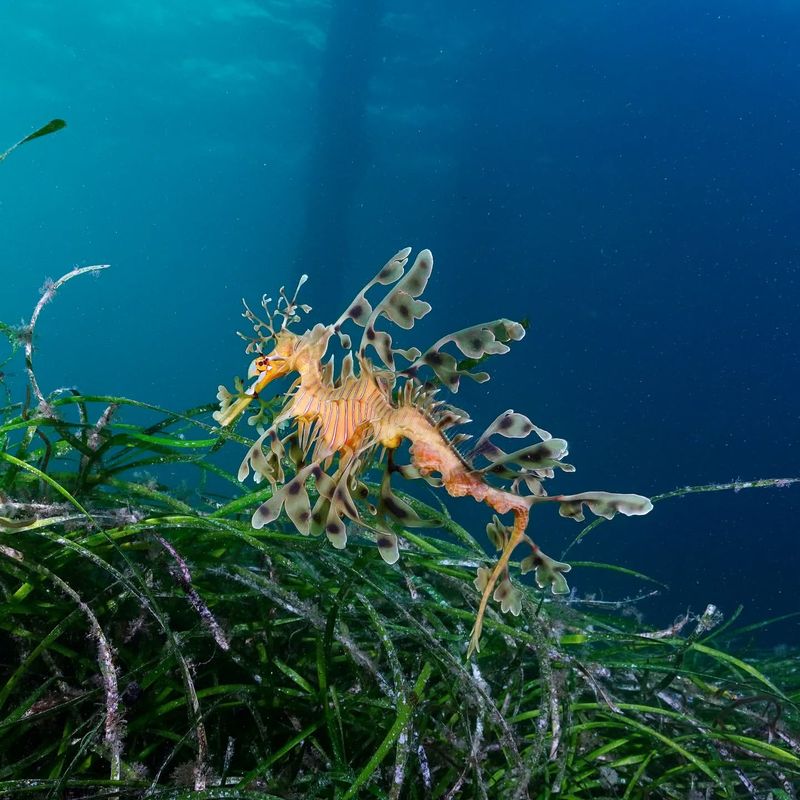
The leafy sea dragon is a mesmerizing fish that looks like a piece of drifting seaweed, thanks to its leaf-like appendages. These extensions allow it to blend perfectly with the seaweed and kelp forests it inhabits along the southern coast of Australia.
This camouflage is essential for avoiding predators and sneaking up on small aquatic creatures. The leafy sea dragon’s ability to move with the currents enhances its disguise, making it appear as part of the plant life.
The leafy sea dragon’s remarkable appearance and behavior highlight the beauty and complexity of marine ecosystems. Conservation efforts aim to protect these unique creatures and their habitats, ensuring that the delicate balance of ocean life is maintained.
12. Mimic Octopus
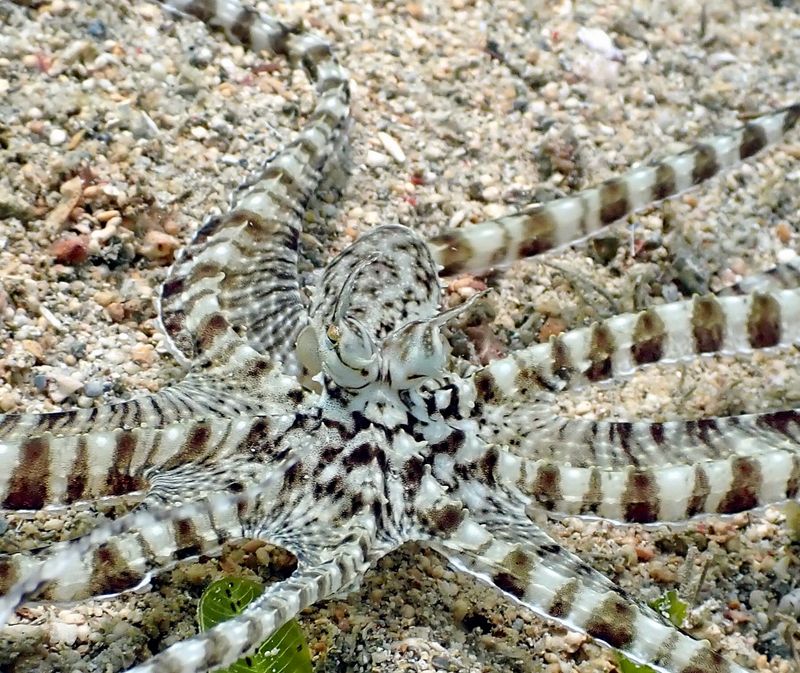
The mimic octopus is a remarkable example of adaptive camouflage, known for its ability to imitate other marine animals. Found in Indonesian waters, it can change its color, shape, and behavior to resemble creatures like lionfish, flatfish, and sea snakes.
This talent for mimicry confuses predators and aids in capturing prey. The mimic octopus’s ability to switch disguises highlights its intelligence and adaptability.
Studying this octopus provides insights into the evolutionary strategies of mimicry and deception in the animal kingdom. Its unique skills emphasize the importance of adaptability in survival and the ongoing dance between predator and prey in marine environments.

